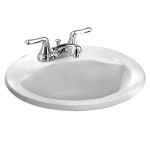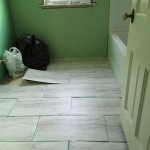How To Refinish Marble Bathroom Countertops With Tiles
Refinishing marble bathroom countertops with tiles offers a cost-effective way to update a bathroom's aesthetic without the expense of full replacement. This process involves adhering tiles directly to the existing marble surface, creating a fresh, new look. However, careful preparation and execution are crucial for a successful outcome.
Assessing the Marble Surface
Before beginning the tiling process, the condition of the marble countertop must be thoroughly assessed. This step is crucial to ensure proper adhesion of the tiles and long-term durability of the finished surface. The following factors should be considered:
- Existing Damage: Any cracks, chips, or significant imperfections in the marble should be repaired before tiling. Fillers specifically designed for marble can be used for minor imperfections.
- Cleanliness: The marble surface must be thoroughly cleaned and free of any soap scum, mildew, or other residues. A strong degreaser and a thorough rinsing are usually required.
- Sealant: Existing sealants on the marble must be removed. A sealant remover can be used, following the manufacturer's instructions carefully.
- Levelness: Significant unevenness in the marble surface may require leveling before tiling. A self-leveling compound can be applied to create a smoother surface for tile adhesion.
Selecting Appropriate Tiles and Materials
Choosing the right tiles and materials is essential for the project's success. Several factors influence this choice:
- Tile Material: Ceramic, porcelain, and glass tiles are suitable for bathroom countertops. Consider the desired aesthetic, durability, and water resistance when selecting the tile material.
- Tile Size and Shape: The size and shape of the tiles will impact the overall look and the complexity of the installation. Smaller tiles are generally more difficult to install but can conform to curves more easily.
- Adhesive: A high-quality thin-set mortar specifically designed for adhering tiles to marble should be used. This ensures a strong bond and prevents slippage.
- Grout: Select a grout that complements the chosen tile and is suitable for wet environments. Epoxy grout provides excellent water resistance and stain resistance.
Preparing the Marble Countertop
Proper preparation of the marble countertop is vital for successful tile adhesion. This involves creating a surface that allows the thin-set mortar to bond effectively.
- Cleaning and Degreasing: Use a heavy-duty cleaner and degreaser to ensure the marble is free of any contaminants.
- Sanding (If Necessary): Lightly sanding the marble surface with fine-grit sandpaper can improve adhesion, particularly if the marble is highly polished. Remove any sanding dust after this step.
- Priming (Optional): Applying a bonding primer designed for slick surfaces like marble can further enhance adhesion.
Installing the Tiles
The tile installation process requires precision and patience. Following these steps ensures a professional-looking finish:
- Layout: Plan the tile layout carefully, considering cuts, patterns, and the placement of decorative elements.
- Applying Thin-Set: Apply a thin layer of thin-set mortar to the marble using a notched trowel, ensuring even coverage.
- Placing Tiles: Firmly press each tile into the thin-set, ensuring full contact and a level surface. Use spacers to maintain consistent grout lines.
- Cutting Tiles: Use a tile cutter or wet saw to make precise cuts for edges and corners.
Grouting and Sealing
Grouting and sealing are the final steps in refinishing the marble countertop with tiles. These steps protect the installation and enhance its longevity.
- Applying Grout: After the thin-set has cured, apply grout to the spaces between the tiles using a grout float, pressing it firmly into the joints.
- Cleaning Excess Grout: Remove excess grout with a damp sponge, being careful not to dislodge the grout from the joints.
- Sealing the Grout: Once the grout is dry, apply a grout sealer to protect it from staining and moisture.
Finishing Touches
Completing the project involves a few finishing touches to ensure a polished and professional appearance.
- Caulking: Apply caulk around the edges of the countertop where it meets the wall or backsplash to create a watertight seal.
- Cleaning: Thoroughly clean the tiled surface to remove any remaining grout haze or residue.
Refinishing a marble countertop with tiles requires attention to detail and careful execution. By following these steps and utilizing appropriate materials, a durable and aesthetically pleasing update can be achieved, transforming the look of the bathroom without the cost of complete countertop replacement.

How To Paint A Countertop Look Like Marble Average But Inspired

How To Paint Over Cultured Marble Counters Floors And Bathtub Surrounds The Zhush

How To Paint Cultured Marble Countertops Diy Tutorial

How To Paint Over Cultured Marble Counters Floors And Bathtub Surrounds The Zhush

Refinishing The Bathroom Vanity Top Part 1 Julepstyle

How To Paint Cultured Marble Countertops Diy Tutorial

How To Clean Marble In Your Bathroom Unique Vanities

Caring For Your Cultured Marble Countertops R D Conroe Tx

How To Paint A Countertop Look Like Marble Average But Inspired

Don T Replace Outdated Cultured Marble Countertops Refinish Them Miracle Method Surface Refinishing Blog
Related Posts







